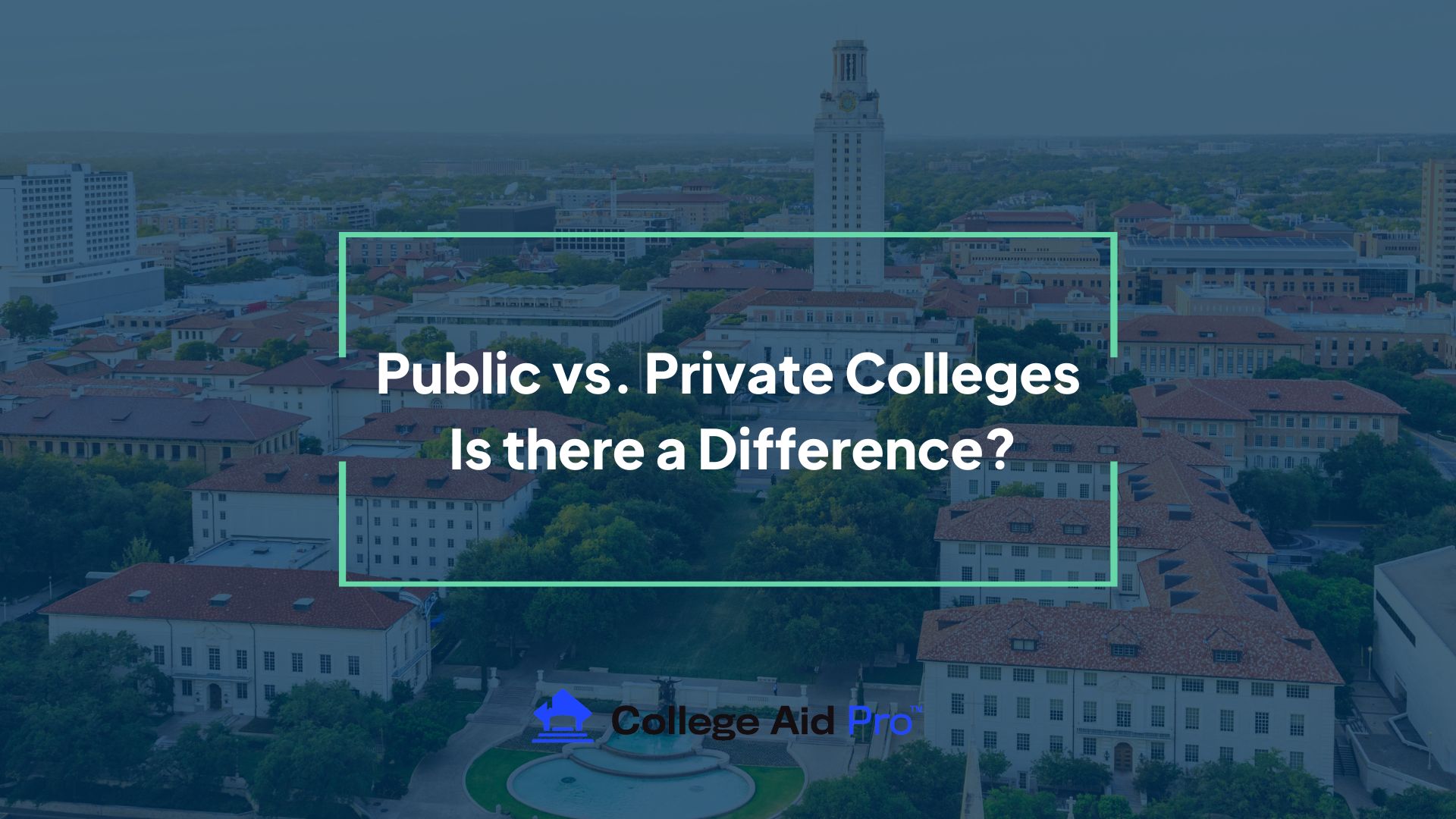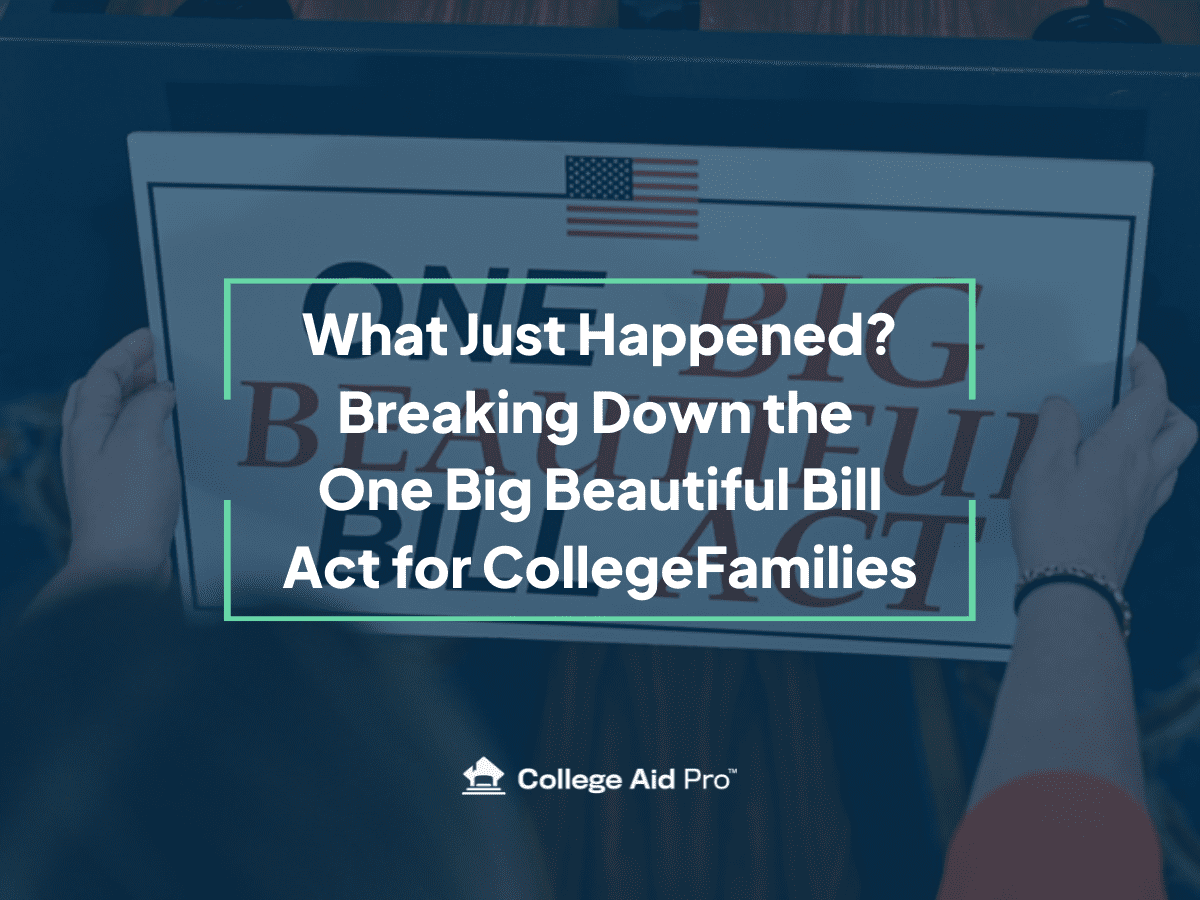The U.S has over 4000 colleges and universities. If you’ve started researching colleges in order to create your college list, you are well aware there are a lot of choices out there. You can search using parameters based on what you would like to study, location in the country, number of students, and whether the school is a private or public college. There’s lots of options to think about, and some of them may be confusing.
This article will explain public vs. private colleges and walk you through the differences between them. In the end public or private may not matter to you, but we want to understand both the advantages and disadvantages of both, in order to make an informed decision about college fit for you.
Public vs Private College Main Differences
Before we dive into specifics, here are the main differences in public and private colleges that may influence what type of college your student will be most interested in.
| Public College | Private College |
| Funded by state government | Funded by tuition, donors, and endowments |
| Lower tuition | Higher tuition |
| Fewer scholarship and grant dollars | More scholarship and grant dollars |
| More research opportunities | Typically fewer research opportunities |
| Larger class sizes | Smaller class sizes |
| More degree options | Typically fewer degree options |
| Less 1 on 1 time with professors | More 1 on 1 time with professors |
Private vs. Public College Funding and Ownership
The biggest difference between public and private colleges are their funding sources. Public colleges are funded by the government, either at the state or national level. They are owned and operated by government entities, such as state or local governments.
Private colleges are funded primarily through tuition fees, donations and alumni contributions, and endowments. They are typically owned by non-governmental entities such as individuals, foundations, or religious organizations.
Private vs. Public College Cost
Public colleges generally have lower tuition fees for in-state residents. They receive government subsidies, which make education more affordable for students who live in that state. Out-of-state or international students typically have to pay higher tuition rates.
Private colleges tend to have higher tuition fees since they rely heavily on student tuition as their primary source of funding. However, they may also provide more scholarship opportunities and financial aid options to offset some of the higher costs.
A simple way to determine if a school is public or private is by looking at tuition. If you see both in state and out of state tuition rates, you know the school is a public school. Private schools only list one tuition rate, there is no difference for in state and out of state students.
Scholarship Opportunities at Private vs. Public Colleges
While tuition rates at private schools may cause you to think that a private school will always be more expensive than a state school, don’t judge the tuition cost from the published number you may find on their website or online.
Although public colleges offer cheaper tuition, they often have a lot fewer scholarships or grant dollars to hand out to a larger student population. Private universities on the other hand, are often able to offer more scholarships or grant opportunities to your student.
We recommend that if your student is interested in attending a private college, don’t immediately dismiss it based on cost. See what scholarships or other financial aid options your student might qualify for first, and compare your final financial aid award letters before making a final choice.
Many families have been pleasantly surprised that the private college their student wants to attend ends up being cheaper than their flagship state school once scholarships and financial aid is applied to their price tag.
Private vs. Public College Education
Academic Offerings & Focus
Public colleges typically offer a broader range of academic programs and majors for your student. They may also have a stronger emphasis on specific fields, particularly those related to the state’s economic or regional needs. Some public universities require students to pick 1-3 possible majors when they apply to school.
Undecided or general studies may still be an option for those who aren’t sure though. Check with the public colleges you are interested in to see if you when you are required to declare your major and how easy or difficult it is to switch majors if you find something you are more drawn to once you begin classes.
Private colleges may offer a more specialized range of academic programs and have a specific focus or niche, such as liberal arts, business, or religious studies. If you are considering a private institution make sure they offer more than one area of study you may be interested in pursuing.
Many private colleges allow students to declare a major after they have started school, sometimes as late as their sophomore year. This can be a big advantage, especially for those students who are still trying to figure out what they are really interested in studying, but if the school doesn’t have your major of choice when it’s time to declare one, you may end of transferring to another school.
Research Opportunities
Because public universities are publicly or state funded, they often get a lot of research dollars that they invest into facilities and labs. This means there may be better research opportunities and equipment set up for your student to pursue at a public institution.
Although there are some private universities like Johns Hopkins or Cornell that spend billions on research and development annually, these are fewer and farther between. If research opportunities are an important part of your student’s college vision, public universities may rank higher on their list.
Public vs Private College Experience
There are so many factors that go into what college your student might want to attend, but experience is definitely on the consideration list. Whether your student wants an urban, suburban, or remote setting, what class size is ideal, size of campus, etc. all come into play when deciding between public and private colleges.
Enrollment & Class Size
Public colleges often have a larger student population due to their accessibility and lower tuition fees. They may also have multiple campuses across the state that offer a wide range of academic programs.
At public colleges, especially in the more lower level, required education classes, your student will likely find class sizes with hundreds of people. Walking into a class of this size can be very intimidating if your student isn’t prepared for it. For some, remaining more “anonymous” may lead to poor attendance and participation.
The opposite can also be true. If your student is highly self motivated and wants to experience a more diverse population within the classroom, a public college may be just what they’re looking for.
Private colleges are typically smaller in size and may have a lower student-to-faculty ratio. This can result in more personalized attention from professors, and smaller class sizes. Depending on what size of high school your student is coming from, the smaller aspect of a private college may be a good option. They may end up at a college that is actually smaller than their high school!
Campus Size
Public universities can offer so many degree options because of their size. With that size can come some challenges for your student. Buildings are often spread across a vast campus that may mean a lot of walking. This may also mean feeling like “just another number,” and if your student isn’t used to this feeling, it could cause a lot of conflicting emotions. If your student is used to a large high school, going to a small private school might be alarming. Prepare your student either way to consider campus size heavily into their decision.
Note: There are many smaller public universities, too. We always recommend campus tours and asking questions about class sizes or professor to student ratios in the classroom when touring.
Extracurricular Activities
Because public colleges are typically so much larger, they tend to offer a lot more extracurricular opportunities for students. If you can think of it, there is probably a club for it at most large public colleges. And if there isn’t, there’s usually some way for you to start one. From art, sports and intramurals, student government, to music or Greek life, there is something for everyone and a high likelihood that your student will find their tribe.
While private colleges may not always have the vast array of activities to join, they do offer plenty of options as well to connect and get involved. Finding a sense of community outside of classes is part of the college experience!
Extracurriculars are a great way for your student to get involved and feel a sense of belonging in, so we highly encourage you to look at extracurricular activities offered at any college your student is looking to attend.
Final Thoughts
Your college decision may not come down to whether or school is public or private, but it is important to know there are some differences between them- and isn’t necessarily the end price!
Do your homework and research on all the schools you put on your college list. Talk to students and possibly even professors, and ask questions. This is going to be your home for the next 4 years, make sure it’s a place you enjoy and fits!



